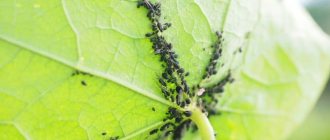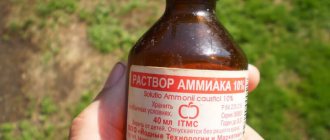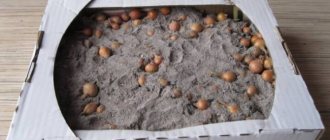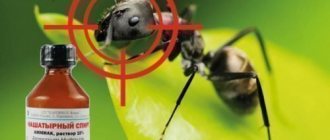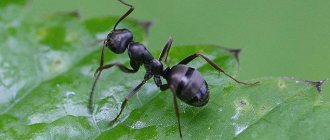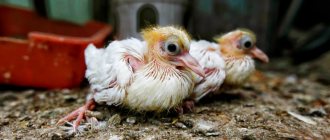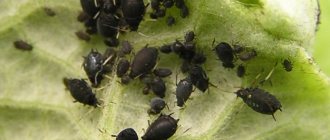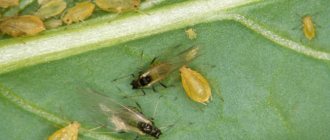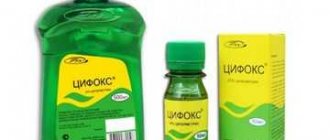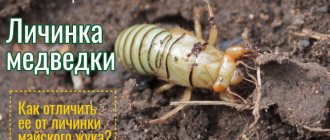The fight against aphids and ants in garden plots is sometimes a life-and-death affair. Insects of these two species exist in symbiosis, so the fight against them must be carried out simultaneously. To destroy pests, not only commercial chemicals are used, but also various traditional methods. Among the most effective home methods for combating aphids and ants is treating plants with ammonia.
This substance, in addition to eliminating pests, can also saturate the soil with the nitrogen necessary for plants, and in the right concentration it is safe for the environment. In the article, we will look at the features of using ammonia to kill aphids and ants, find out how to use this liquid correctly, and how to spray.
Description and action
Ammonia is familiar to many - it is a colorless liquid with a specific, difficult-to-tolerate heavy odor. Note that this substance is also used in cosmetology, in the manufacture of household chemicals, and even in food production.
Ammonia, or ammonia as it is also called, is a quite effective remedy against aphids. This medical substance for its original purpose has found considerable application in the economy, including agriculture. The damaging effect of ammonia on aphids and ants goes in two directions: firstly, the substance, having a pungent odor, repels pests from the area. And secondly, it destroys those insects that are directly affected by drops of the solution. But this information will help you understand how to fertilize melons and watermelons with ammonia and what results can be achieved.
The principle of action of ammonia on a pest is as follows: the substance enters the digestive tract of the insect, which causes a burn to the walls of this tract, leading to swelling, paralysis and subsequent death of the aphid or ant. In half of the fatal cases, the substance simply does not have time to reach the digestive tract, since the strong aroma of the product paralyzes the pest’s breathing, and the latter dies.
Ammonia also acts as an irritant on ants. Smelling a strong unpleasant aroma, the ants leave the area in a hurry. In addition to aphids and ants, ammonia is also effective against mole crickets, onion and carrot flies, and wireworms.
Ammonia can quite effectively cope with aphids at the beginning of the formation of their colony. However, if the colony is already large, it is necessary to use more potent chemicals to save the harvest. Please note that if “military action” aimed at defeating aphids is not started in time, the pest will be able to destroy not only the entire crop, but also cause the plants themselves, even mature trees, to die.
It is also worth learning more about whether you can water onions with ammonia, and how to do it correctly.
Note that ammonia is good because it destroys not only the insects themselves, but also their larvae and eggs. Thus, the elimination of the pest occurs at all stages of its development, which is very important.
The substance, unlike many herbicides, is safe for the environment, does not cause damage to cultivated plants, does not harm water bodies, beneficial insects, birds, and does not accumulate like nitrate in fruits.
But how strawberries are treated with ammonia in the spring, and what you should pay attention to, will help you understand the information at the link.
In the video - ammonia against aphids:
In addition to all the listed benefits, ammonia is quite accessible and very inexpensive. It can be easily purchased at a pharmacy, and if you need a large volume, then in garden stores. In addition to its damaging effect on pests, ammonia is also a plant food, as it contains nitrogen in large quantities. It will also be useful to learn about how to fertilize tomatoes with ammonia.
Types of ants
In Russia there are several species of ants that may end up in the house:
- The most common are small pharaoh (domestic) red ants - they can be recognized by their red or yellow color. The size of these individuals is no more than 3 mm. Since they were brought to Russia from the warm countries of Asia, they are unable to survive on the street, but they penetrate into houses even on high floors. Like other ant species, they can be winged during the breeding season.
- Yellow house thief ants, as a rule, do not rise above the third floor.
- Black garden ants, lasius, wander into the house extremely rarely, and also by accident, but in the greenhouse the ants feel great.
- The red forest ant, measuring from 7 to 14 mm, is also a rare guest in residential areas. It can be identified by its red or brown color (the head and abdomen are slightly black).
- Even larger - up to 15-20 mm - are black or red-breasted carpenter ants, which are dangerous pests.
- White “ants” are termites; they can be encountered by residents of Sochi and Vladivostok, as well as warm CIS countries.
How to use
When removing aphids and ants from an area, ammonia is good because it does not accumulate in the soil and fruits. Therefore, this product can be used throughout the growing season: from the initial germination of crops to the period of fruit ripening, as well as after harvesting. Be sure to add soap or shampoo to solutions with ammonia to increase the effectiveness of the drugs and give them sticky properties.
To properly spray bushes and trees with solutions containing ammonia, you will need the following materials and equipment:
- Spray. Its volume depends on the number of green spaces requiring treatment. It is also worth paying attention to how to treat currants with ammonia in the same way.
Using a plant spray - Gauze bandage . This remedy will protect your respiratory tract from getting caustic ammonia into it.
- Gloves.
- A bucket to dilute the solution with the required concentration.
- Actually, ammonia itself . We recommend purchasing it in garden stores - the volume of bottles there is much larger, so the cost of processing will be more economical.
- Soap . Take either household or tar, since these types have the highest antibacterial and disinfectant characteristics. You can use laundry soap against aphids on roses.
- Water.
Using the simple materials listed above, you can properly treat your garden with ammonia from aphids and ants.
Ammonia for aphids: application
Ammonia against aphids: video
Before treating aphids from the garden with ammonia, you should get rid of all anthills (to do this, you can water the anthills with muracide solution twice over the summer), remove dry branches and burn obvious areas of damage. To combat aphids with ammonia, use a watering can with a wide nozzle, since when using a spray bottle, sprayed drops of ammonia may not reach the leaves. The solution is used not only for aphid-infested plants, but also for healthy crops.
When processing, special attention is paid to the underside of the leaf, because this is where aphids hide. You need to spray on a cloudy day or in the evening. All plants can be sprayed with ammonia on grapes every 10-12 days. If the infection is small, the plants are treated every 2 weeks, and for prevention, you can get by with one procedure per month using a weak solution (10 ml of alcohol per 10 liters of water). To treat large orchards, you need to start spraying with an ammonia solution without waiting for the invasion of pests.
Cooking methods
Let's find out how you can prepare solutions with ammonia to fight aphids and ants.
Against ants
To implement this method, take a liter of boiling water and add 100 ml of ammonia to it. The resulting mixture, while it is still hot, is poured over the anthill. To make the effect more pronounced, you can pry the insects’ home with a shovel. But this information will help you understand how to poison ants in the garden, and what the best means are.
Fighting ants
Standard solution against aphids
This composition is prepared in most cases when it is necessary to combat aphids. In this case, take 60 ml of ammonia per bucket of water (10 ml), and add a quarter of a piece of soap. All components are mixed, it is necessary to ensure complete dissolution of the soap. Then the spray bottle is filled with the resulting composition, and the bushes are processed.
Standard solution against aphids
Sugar solution
Instead of soap, you can add sugar to the spray solution, which in its liquid state also has sticky properties. To prepare such a sweet composition, add 3 tbsp to a bucket of warm water. tablespoons of ammonia and 5 tablespoons of granulated sugar. You need to mix all the components until they dissolve, after which you can pour the solution into a spray bottle and use it for spraying. It will also be useful to learn about how to fertilize strawberries with ammonia.
Sugar solution
Which soap is better to use in a solution with ammonia
For spraying, it is better to use simple laundry soap. Toilet soap is also good. It needs to be grated so that it dissolves better in water. You can first dilute the soap in hot water and then add ammonia to the prepared solution.
Do not use liquid soap or dishwashing detergent. Liquid detergent has no effect on aphids. If you do not intend to enhance the effect of ammonia, and use the detergent as an adhesive, then the choice is yours.
Prevention
As a preventive measure against aphids and ants, you can spray the plants every week with the following solution: 15 ml of ammonia per bucket of water. In addition to spraying, you can also water plants with this composition to compensate for the lack of nitrogen in the soil.
Rules for the procedure
It is necessary to treat plants against aphids with ammonia for at least ten days, with a break between treatments of one or two days.
It is recommended to spray in the evening, as at this time the risk of damage to aphids and beneficial insects is reduced.
Before spraying bushes and trees, the latter should be carefully inspected. Preliminary cutting of shoots and foliage damaged by aphids will increase the effectiveness of treatment. After cutting, be sure to burn this biomaterial; do not leave it on the site, as aphids can reproduce again.
A one-time treatment with ammonia will not bring the desired effect. The substance is not so aggressive and potent that one treatment is enough. But here you have to choose: either use chemicals with a strong damaging effect, but harmful to nature, or natural preparations - not so effective and instant, but safe for plants and the entire environment. By clicking on the link you can find out what the recipe for onion flies with ammonia looks like.
After treating plants with ammonia, they should not be watered for several days.
Ammonia can be used as a spring preventative spraying of the garden against aphids. Before the procedure, it is necessary to carefully remove all organic remains from the previous season: fallen leaves, branches, old grass - all debris where aphid larvae may be located. Collected bioresidues must be burned and not thrown away. Repeat preventive spraying at least three times. But you can find out what to water cucumbers for a good harvest by clicking on the link.
Reviews
Experienced gardeners will share their opinion on the use of ammonia in the fight against aphids and ants.
- Boris, Lipetsk: “I have a decent-sized garden, so I know first-hand about pests. Every spring I start the struggle, and only end closer to winter. Of course, aphids are especially annoying, and where there are aphids, there are ants. In the spring I treat with herbicides, but sometimes aphids appear after flowering or during it. In this case, I use ammonia - I make solutions based on it, and I spray berry bushes and fruit trees. In addition, every spring I water all the anthills found on the site, even small ones, with hot water and ammonia. This struggle bears fruit – I have a wonderful harvest every year.”
- Tatyana, Chelyabinsk: “I prefer to grow vegetables and berries in my garden without the use of chemicals. No matter what the manufacturers say, chemicals still end up in the soil and settle in the fruits. I found an excellent folk solution against aphids and ants - ammonia: I use this substance to prepare solutions for spraying bushes. I note that the treatment results are good, there are noticeably fewer aphids, but it is important not to miss the moment when the insect has just appeared on the site. It is necessary to inspect the bushes regularly, carefully, in order to have time to treat in time in case of damage. At the early stage of pest spread, ammonia is an excellent and environmentally friendly remedy.”
So, we learned how to use ammonia to kill aphids and ants on the site. This simple and affordable substance can quite successfully cope with pests, especially at the early stage of infection. Prepare solutions for spraying in the required concentration, and during the procedure do not forget about protective measures. In addition, it is important to carefully process each leaf, including its lower part, and then the threat of aphids will pass your garden, and the harvest will delight you with its abundance.
Why are ants harmful in the countryside?
Despite the prevailing opinion about the benefits of ants, uncontrolled insects can fill the entire territory in a short time, causing more harm than good. They settle under any stones, decorative figures or boards, where they cannot be immediately noticed and sprayed with ammonia solution.
The center of life of the colony is the queen, which lays thousands of eggs. Working individuals spend all day arranging housing and searching for food. Insects love sweets, so food supplies and berry harvests are at risk. While obtaining material for the construction of an anthill, pests gnaw wooden buildings, resulting in the formation of holes.
Insects in a country house
Having made their way into the room, the ants settle under baseboards and in other secluded corners. Often they can be noticed after the consequences become obvious:
- Pests crawl on trash cans, kitchen countertops, and leftover food. At the same time, pathogenic bacteria spread throughout the house.
- A person who is bitten, even if there is no infection, may experience an allergic reaction.
- Pets become restless in the presence of insects. Pests bite animals and leave eggs in their fur.
- The reason for fighting ants is also the spoilage of food, which after an invasion of insects can only be thrown away.
Along with a beautiful bouquet of flowers, aphids can enter the room. The fight against insects must begin as quickly as possible, since one individual can produce about a hundred larvae. Voracious pests can lead to the complete destruction of indoor plants and move into the garden, and not everyone will decide to use chemicals indoors. It is safer to use ammonia, which will not harm the flowers or poison the air.
The pungent smell when the window is open disappears after 10-15 minutes, and the effect lasts for a long period.
Damage from insects in garden beds
There are practically no obstacles for ants. By digging tunnels underground and crawling along the surface of the soil, they can cause considerable damage to plantings:
- gnaw leaves of plants and seedlings;
- damage sugary fruits, making them unsuitable for storage;
- they gnaw holes in the wood, leaving the trees defenseless against other pests;
- destroy lawns and flower beds by digging deep tunnels in the soil and eating plant roots;
- when extracting nectar, they damage flower buds, which then cannot fully open;
- The ants are interested in increasing the aphid population, so they spread them around the garden, which soon becomes a serious problem.
